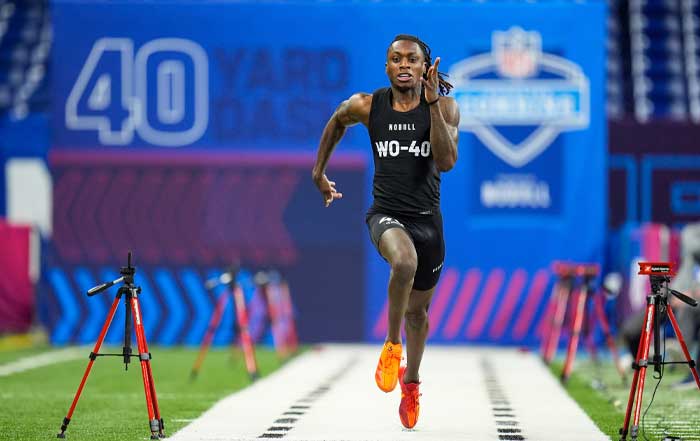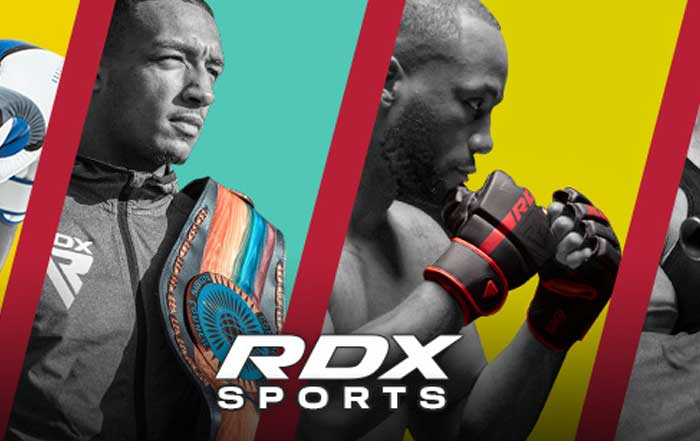The European fitness landscape is redefining a connection between physical performance, mental health, and holistic well-being. The focus is no longer exclusively on traditional gym training or athletic performance. Instead, there is a comprehensive integration of technology, mindfulness, nutrition, and sustainability that seeks to balance both the mind and body. From urban centers in Germany, France, and the United Kingdom to wellness retreats in Italy, Spain, and the Nordic countries, fitness in Europe is shifting toward a lifestyle movement that promotes resilience, inclusivity, and long-term health.
This evolution reflects wider social, economic, and cultural changes. Europeans are living longer, urbanization is shaping daily routines, and digital technologies are enabling highly personalized fitness experiences. As more people seek harmony between physical activity and mental wellness, the future of fitness in Europe represents not just an industry trend but a social necessity. On FitPulseNews, where global readers turn to explore health, fitness, and wellness, this transformation deserves an in-depth examination of its drivers, challenges, and opportunities.
The Shift from Physical Performance to Holistic Well-Being
For decades, fitness in Europe revolved around physical outcomes such as strength, endurance, and aesthetics. However, in 2025, a more integrated approach has emerged that equally prioritizes mental clarity, emotional balance, and preventive healthcare. The demand for mindfulness practices, meditation sessions, and recovery-focused programs has surged alongside traditional workouts.
The World Health Organization (WHO) has emphasized that mental health conditions are among the leading causes of disability globally, and European policymakers have responded by incorporating mental wellness into national fitness and healthcare strategies. Gyms and fitness studios across London, Berlin, and Paris are now as likely to feature yoga and breathwork sessions as they are to host high-intensity interval training. This holistic approach is shaping a new cultural norm, one where the gym is not just a place to train but a community hub for well-being.
Explore how culture is shaping fitness.
Technology and the Rise of Personalized Fitness
The integration of digital tools is central to the evolution of fitness in Europe. Wearable devices, smart fabrics, and AI-powered fitness platforms have revolutionized how individuals train, track progress, and maintain accountability. Companies like Garmin, Polar, and Whoop are competing with global tech leaders such as Apple and Samsung to deliver wearables that monitor not just steps and calories but also sleep cycles, recovery levels, and stress markers.
Artificial intelligence plays a growing role in tailoring exercise plans and nutritional recommendations to individual needs. For example, AI-driven apps in Sweden and Denmark are integrating genetic data, lifestyle choices, and biometric feedback to craft hyper-personalized fitness journeys. This level of customization reflects a broader trend in European society: the move toward individualized healthcare and precision wellness.
Learn more about the impact of technology in health and fitness.
Fitness and Mental Resilience: A European Perspective
The mental health crisis exacerbated by the pandemic has left a lasting imprint on the European population. In response, fitness providers are integrating stress-reducing programs into their core offerings. Mind-body practices such as Tai Chi, Qi Gong, and meditation are being incorporated into mainstream European gyms, while corporate wellness initiatives in Switzerland and the Netherlands are embedding mindfulness training into employee health programs.
The European fitness industry recognizes that building resilience is not only about reducing stress but also about cultivating adaptability and focus. Programs now often combine physical training with journaling, guided visualization, and cognitive exercises to improve mental performance. These practices are particularly valued in professional environments where high productivity and creativity are required, reflecting the increasing overlap between workplace well-being and fitness innovation.
Stay updated on the latest business and workplace wellness trends.
Nutrition and Sustainable Living as Fitness Pillars
Fitness in Europe is inseparable from nutrition and lifestyle choices. The surge in plant-based diets, organic food movements, and personalized supplementation is reshaping how Europeans approach physical performance and recovery. Countries such as Germany and the Netherlands have witnessed exponential growth in vegan and flexitarian lifestyles, driven by both environmental awareness and health considerations.
Leading organizations like European Food Safety Authority (EFSA) are encouraging balanced dietary strategies, while fitness centers are partnering with nutritionists to offer integrated wellness programs. Apps such as Yazio and Lifesum are widely used to align nutrition with personal goals, ensuring that diet and exercise reinforce each other.
This intersection of fitness and nutrition also ties closely to Europe’s sustainability agenda. Reducing meat consumption, promoting locally sourced produce, and adopting eco-friendly packaging are part of the movement to ensure that health and fitness contribute to planetary well-being. Learn more about sustainability and environment-focused fitness and nutrition strategies.
Future of Fitness Mind & Body in Europe
2025 - Present
Holistic Integration Era
Mind-body wellness becomes mainstream across Europe. AI-powered personalization meets mindfulness practices in gyms from London to Berlin.
2026-2027
Sustainability Revolution
Nordic countries lead eco-conscious fitness with energy-generating gyms. Plant-based nutrition programs expand across Western Europe.
2028-2029
Digital Transformation
VR/AR fitness experiences become standard. Eastern European markets emerge as major players in digital wellness innovation.
2030
Global Leadership
Europe sets global standards for sustainable, inclusive fitness. Integration of environmental responsibility with personal health becomes universal.
Key Transformation Pillars
🧘 Mind-Body Integration
🌱 Sustainability Focus
🤖 AI Personalization
🏛️ Policy Integration
The Role of Sports and Cultural Exchange
Sports have always been a powerful unifier in Europe, and they are increasingly influencing fitness culture. The popularity of football, cycling, and winter sports extends beyond entertainment and inspires everyday fitness routines. With events such as the UEFA European Championship, the Tour de France, and the Winter Olympics, European citizens find role models in professional athletes who emphasize discipline, teamwork, and endurance.
At the same time, cultural exchange is bringing new practices into the European fitness landscape. The global rise of yoga from India, martial arts from East Asia, and dance-based fitness from Latin America has been embraced across European cities, blending global traditions with local innovation. This fusion has enriched fitness experiences and made them more accessible and engaging to diverse demographics.
Read more about the influence of sports on European culture.
Fitness Industry Economics and the European Market
The fitness industry is a major economic force in Europe, valued in the tens of billions of euros. According to recent market data, Germany remains the largest national fitness market, followed by the United Kingdom, France, and Italy. These markets are driven by both large fitness chains like Basic-Fit and boutique studios that cater to niche audiences seeking highly personalized experiences.
Employment opportunities in the sector are growing, with careers ranging from personal training and physiotherapy to digital fitness development and wellness coaching. The demand for skilled professionals with expertise in both physical and mental training has never been higher, creating new career pathways. For those interested in the evolving employment landscape, explore fitness and health-related jobs.
Environmental Responsibility in Fitness Spaces
Sustainability is not only a dietary consideration but also a design principle for fitness facilities across Europe. Gyms are adopting energy-efficient lighting, recycling water systems, and eco-friendly flooring materials. Some fitness centers in Scandinavia are even experimenting with generating electricity from exercise machines, converting human energy into renewable power sources.
This alignment of environmental responsibility and fitness innovation reflects a broader European cultural trend toward eco-conscious living. Consumers are increasingly drawn to brands and facilities that demonstrate a commitment to reducing their carbon footprint, a shift that places sustainability at the core of the future of fitness. Learn more about environmental innovation in wellness.
Challenges Ahead: Inequality, Accessibility, and Digital Divide
Despite the progress, challenges remain. Not all European populations have equal access to fitness resources. Economic inequality means that boutique wellness services in Paris or London may be unattainable for many individuals, while rural areas still struggle with limited infrastructure. The digital divide also creates disparities in access to advanced technologies such as AI-based fitness apps and wearables.
Policymakers and industry leaders are working to close these gaps by investing in public fitness facilities, subsidizing digital wellness platforms, and promoting school-based fitness programs. Accessibility will remain a defining challenge for the next decade, requiring innovative solutions that prioritize inclusivity and affordability.
Stay updated with news and policy developments.
Future of Fitness Mind and Body in Europe
As Europe advances toward 2030, fitness will continue to evolve as both a personal pursuit and a societal commitment. The future points to deeper integration of artificial intelligence, more immersive virtual and augmented reality fitness experiences, and a stronger alignment with environmental and cultural values.
Europe’s strength lies in its diversity—of cultures, economies, and approaches to well-being. This diversity will ensure that fitness in Europe remains dynamic, adaptable, and globally influential. Whether through the development of sustainable gyms, cross-cultural training practices, or the rise of digital wellness ecosystems, Europe is positioned to set global standards in uniting mind and body for a healthier future.
To follow ongoing developments in this transformative field, readers are encouraged to explore innovation, global trends, and comprehensive coverage on FitPulseNews.
Regional Perspectives on Europe’s Fitness Transformation
The United Kingdom: Balancing Tradition and Innovation
The United Kingdom has long been a leader in Europe’s fitness sector, with cities such as London, Manchester, and Birmingham hosting diverse fitness offerings that cater to every demographic. The British approach to fitness has historically leaned heavily toward sports such as football, rugby, and cricket, which dominate the cultural imagination. However, by 2025, the fitness market in the UK reflects a hybrid model that fuses traditional athletic training with mindfulness, digital innovation, and sustainability.
Large gym operators like PureGym and David Lloyd Clubs have expanded their services to include mental wellness sessions, nutritional support, and corporate packages aimed at improving employee resilience. At the same time, boutique studios specializing in yoga, Pilates, and meditation are growing rapidly, fueled by the demand for holistic health. The government has also invested in community-based fitness programs to reduce inequality in access, with local councils providing subsidies for public gyms and wellness classes.
Digital fitness is particularly strong in the UK, where mobile app adoption is high, and consumers are accustomed to blending technology with lifestyle. AI-powered fitness platforms that offer personalized routines are widely embraced, while partnerships between the NHS and private tech companies are piloting solutions that integrate fitness data into preventive healthcare strategies.
Learn more about fitness innovation shaping the UK.
Germany: Europe’s Fitness Powerhouse
Germany remains the largest fitness market in Europe, both in terms of membership numbers and revenue. German society’s cultural emphasis on discipline, precision, and structured training has created fertile ground for an expansive fitness ecosystem. Chains like McFIT and Fitness First dominate the urban markets, while boutique studios focusing on yoga, CrossFit, and functional training have become increasingly popular.
A defining feature of the German fitness landscape is the integration of medical fitness. Many gyms partner with physiotherapists and healthcare professionals to design programs that not only improve strength and endurance but also address rehabilitation and preventive health. Insurance companies in Germany often incentivize fitness participation by offering reduced premiums for members who regularly attend gyms or track physical activity through wearable devices.
Sustainability is also embedded in the German approach. Eco-friendly gyms with solar-powered facilities and recycled equipment are increasingly common, reflecting the nation’s strong environmental values. This combination of healthcare integration, environmental responsibility, and digital innovation places Germany at the forefront of Europe’s future fitness model.
Discover more about health-focused initiatives in Europe.
France: Wellness Meets Lifestyle
Fitness in France is deeply connected to lifestyle, aesthetics, and balance. The French population has historically prioritized walking, cycling, and outdoor activity, but the growth of urban fitness centers and boutique studios is reshaping habits in Paris, Lyon, and Marseille. By 2025, the French fitness industry emphasizes the fusion of elegance, mindfulness, and sustainability.
French gyms often provide spa-like environments, blending exercise with wellness treatments such as massages, aromatherapy, and hydrotherapy. Meditation, yoga, and dance-inspired workouts are particularly popular, reflecting the cultural preference for holistic experiences rather than purely performance-driven outcomes. Nutrition is central, with organic, plant-based diets gaining traction, especially in urban areas where awareness of environmental issues is strong.
Moreover, fitness in France is strongly linked to the outdoors. Cycling culture continues to thrive, fueled by the iconic Tour de France, while hiking in regions like the Alps and Pyrenees remains a favored activity that combines fitness with connection to nature. The French government has also promoted cycling-friendly infrastructure, ensuring that fitness aligns with broader environmental goals.
Explore more about culture-driven fitness.
Italy and Spain: Tradition Meets Modern Wellness
Italy and Spain share a Mediterranean heritage that values food, family, and community, all of which are now being woven into the fitness narrative. While football remains central to both cultures, fitness trends are increasingly shaped by wellness, sustainability, and tourism.
In Italy, boutique studios in Milan and Rome are blending traditional training with mindfulness and nutrition coaching. The Mediterranean diet, long celebrated for its health benefits, is deeply integrated into fitness programs, making Italy a unique model where nutrition and exercise are seamlessly combined. Fitness tourism is also rising, with regions such as Tuscany offering wellness retreats that include vineyard hikes, Pilates in nature, and organic meals.
Spain has embraced group-based fitness, with a growing emphasis on social connection. Outdoor boot camps, community yoga sessions, and dance-inspired workouts dominate the Spanish market, reinforcing the cultural importance of togetherness. Barcelona and Madrid are also centers of digital fitness innovation, where startups are creating AI-driven platforms that combine physical training with mindfulness and social networking.
Learn more about worldwide fitness culture.
Scandinavia: The Pioneers of Sustainable Fitness
The Nordic countries—Sweden, Norway, Finland, and Denmark—are pioneering the integration of sustainability, wellness, and technology in fitness. Their populations already enjoy some of the highest levels of physical activity in Europe, supported by national cultures that value outdoor sports, cycling, and holistic well-being.
In Sweden, companies like Lifesum are leading the digital wellness revolution by offering personalized nutrition and fitness plans that are accessible to millions. Public policies strongly support cycling and walking infrastructure, ensuring that fitness is woven into daily life. Norway and Finland are global leaders in outdoor fitness, with forest bathing, cross-country skiing, and winter swimming becoming mainstream practices tied to both mental resilience and physical strength.
Denmark has been at the forefront of sustainable gyms, where human-powered machines convert energy from exercise into electricity. These facilities not only reduce carbon emissions but also serve as educational tools, reinforcing the connection between personal health and environmental responsibility. Scandinavia represents the blueprint for how fitness can be harmonized with sustainability and innovation.
Stay informed on environmental initiatives in fitness.
Eastern Europe: Emerging Growth and Opportunities
Countries in Eastern Europe such as Poland, Hungary, and Romania are witnessing rapid growth in the fitness sector. While the market is less mature compared to Western Europe, the expansion of middle-class populations and increasing health awareness are driving investments in gyms, boutique studios, and digital fitness platforms.
In Poland, fitness chains are growing rapidly, while government-backed initiatives encourage physical activity to reduce obesity rates. Romania and Hungary are seeing rising interest in yoga, meditation, and wellness tourism, particularly among younger demographics. The affordability of services in Eastern Europe is also attracting international tourists, turning wellness and fitness into an economic growth engine for the region.
This emerging market is expected to play an increasingly important role in Europe’s fitness future, particularly as technology adoption accelerates and regional integration with Western Europe strengthens.
Fitness Tourism: Europe’s Competitive Edge
Wellness and fitness tourism are significant growth areas in Europe, particularly in countries like Spain, Italy, and Greece, where climate, culture, and natural beauty enhance the experience. Luxury resorts are integrating fitness into their offerings, providing tailored programs that include yoga on the beach, cycling through vineyards, and spa-based recovery treatments.
The Alpine regions of Switzerland, Austria, and France attract tourists for skiing and mountain-based activities, while Mediterranean destinations draw visitors seeking holistic retreats. Fitness tourism not only contributes to national economies but also reinforces Europe’s image as a global wellness destination.
Learn more about sports and travel innovation.
Corporate Wellness and the European Workplace
In Europe, businesses are increasingly investing in wellness as part of their corporate strategies. Employee fitness and mental resilience are seen as critical to productivity, creativity, and retention. In Switzerland and the Netherlands, corporate wellness programs are highly advanced, offering gym memberships, mindfulness training, and nutritional support as part of employee benefits.
The focus is on building sustainable work-life balance, addressing burnout, and improving mental clarity. Remote working, which remains common after the pandemic, has also reshaped corporate wellness, leading to the rise of virtual fitness programs and digital mental health tools tailored to employees working from home.
For more on the intersection of business and wellness, explore in-depth coverage at FitPulseNews.
Fitness Brands and Consumer Behavior
Consumer behavior in Europe’s fitness sector is increasingly values-driven. People are choosing brands that not only deliver results but also align with ethical and environmental principles. Global companies such as Nike, Adidas, and Puma, all headquartered in Europe, are expanding their fitness apparel lines with sustainable materials and digital integrations.
Meanwhile, boutique European brands are carving out niches by offering eco-friendly yoga mats, biodegradable packaging for supplements, and fitness gear made from recycled plastics. Consumers are demanding transparency, authenticity, and social responsibility from fitness brands, creating new opportunities for companies to innovate.
Stay updated on leading fitness brands.
A Unified Future of Mind and Body
The future of fitness in Europe is not a single trend but a multifaceted movement that integrates physical training, mental wellness, nutrition, technology, and sustainability. Each region is contributing unique cultural strengths, from the discipline of Germany to the lifestyle-driven balance of France and the eco-conscious innovations of Scandinavia.
By 2025, fitness in Europe is less about chasing aesthetic goals and more about cultivating long-term health, resilience, and harmony with the environment. It reflects a new vision of holistic well-being, one that unites mind and body while aligning personal health with broader societal goals. As Europe continues to lead the way, its model of sustainable, inclusive, and technologically advanced fitness is likely to inspire global transformation.
Case Studies of Leading European Fitness Companies
Basic-Fit: Democratizing Fitness Across Europe
One of the most influential players in the European fitness sector is Basic-Fit, headquartered in the Netherlands. With thousands of clubs spread across countries like France, Belgium, Spain, and Germany, the company has established itself as a leader in affordable and accessible fitness. Basic-Fit’s model is rooted in scale and inclusivity, ensuring that people from different income levels can access quality fitness facilities.
In recent years, Basic-Fit has integrated digital platforms that allow members to follow workouts at home, track progress through mobile apps, and combine gym visits with virtual training. Their focus on affordability while maintaining quality has enabled them to capture large market share, making them one of the best examples of how fitness chains can thrive in a competitive European landscape.
For readers following industry growth, explore business-driven fitness developments.
David Lloyd Clubs: Redefining Premium Wellness
At the opposite end of the spectrum, David Lloyd Clubs, with roots in the United Kingdom, exemplifies the premium approach to fitness and wellness. With facilities across Europe, the brand emphasizes a holistic offering that goes beyond traditional gyms. Clubs are designed as lifestyle destinations, complete with tennis courts, swimming pools, spas, restaurants, and mindfulness spaces.
By 2025, David Lloyd Clubs have embraced digital innovation by providing hybrid membership options that combine in-person experiences with online classes and virtual coaching. Their emphasis on community, exclusivity, and wellness integration has appealed to affluent demographics, positioning them as leaders in the premium fitness space.
McFIT and RSG Group: The German Fitness Giant
RSG Group, parent company of McFIT, represents one of the largest privately owned fitness enterprises in Europe. Headquartered in Germany, the group has pioneered the development of innovative fitness concepts, from budget-friendly gyms to boutique studios that specialize in design, digitalization, and unique experiences.
Their facilities increasingly integrate cutting-edge technologies, such as AI-driven training machines and virtual reality fitness programs, enabling members to enjoy immersive and personalized experiences. By blending affordability with innovation, RSG Group has maintained its dominance in Germany and expanded into other major European markets.
Stay connected with updates in sports and fitness innovation.
Les Mills Europe: Driving Group Fitness Evolution
Group fitness has always been at the heart of the European experience, and Les Mills, originally from New Zealand, has a strong foothold in Europe. Their programs such as BodyPump, BodyCombat, and RPM have been adopted by thousands of gyms across the continent.
In Europe, Les Mills has embraced digital streaming, allowing individuals to access classes from home while maintaining the motivational group atmosphere virtually. Their success lies in their ability to adapt global fitness concepts to European cultural preferences, emphasizing community, energy, and accessibility.
Learn more about fitness culture and group exercise.
Government Initiatives Supporting Fitness in Europe
The United Kingdom: NHS and Preventive Health Integration
The National Health Service (NHS) in the UK has taken bold steps to integrate fitness into healthcare. With obesity and lifestyle-related illnesses placing a strain on the system, the NHS has developed partnerships with gyms and fitness providers to prescribe exercise as part of medical treatment. Patients at risk of diabetes, cardiovascular disease, or depression are increasingly encouraged to participate in structured fitness programs as part of their treatment plans.
This medicalization of fitness reflects a recognition that long-term health outcomes are best achieved through prevention rather than cure. By aligning public health policy with the fitness industry, the UK is setting a model for other nations to follow.
Germany: Insurance-Backed Fitness Participation
In Germany, health insurance companies play a central role in promoting fitness participation. Many insurers reimburse gym memberships, offer financial incentives for regular training, and even provide discounts for members who use wearables to track activity. This integration of insurance and fitness ensures that health-related behaviors are rewarded, making it easier for people to adopt and maintain active lifestyles.
Such initiatives highlight the way Germany blends its healthcare infrastructure with private industry to build healthier populations. This system is particularly successful in bridging the gap between preventive healthcare and personal fitness.
Nordic Countries: Embedding Fitness in Everyday Life
The Nordic countries have set benchmarks in embedding fitness into everyday routines. Governments in Norway, Sweden, and Denmark invest heavily in infrastructure such as bike lanes, pedestrian-friendly urban design, and public sports facilities. Schools prioritize daily physical activity, ensuring that children develop lifelong fitness habits from an early age.
Public health campaigns emphasize outdoor activity as a key to mental resilience, especially in regions with long winters. Forest bathing, skiing, and hiking are actively promoted by local governments as both cultural traditions and health imperatives. The Nordic model demonstrates how fitness is not merely an industry but an integrated component of national culture and policy.
For more on regional health policies, visit world health updates.
France and Spain: Encouraging Active Cities
Urban planning plays a critical role in France and Spain, where city governments are redesigning urban landscapes to encourage walking, cycling, and outdoor exercise. Paris has introduced widespread cycling infrastructure, while Barcelona has invested in pedestrian-friendly “superblocks” that reduce car traffic and promote community fitness activities.
These initiatives are not only improving fitness levels but also addressing environmental concerns, creating healthier and more sustainable cities. They represent the synergy between fitness, environmental policy, and cultural lifestyle.
Learn more about sustainability in European fitness.
Startups and Innovation Driving Fitness Forward
Freeletics: AI-Powered Training from Germany
Freeletics, a German-based fitness app, has become a global leader in digital fitness solutions. By using artificial intelligence, the app creates personalized workout plans tailored to individual goals, fitness levels, and schedules. Freeletics exemplifies how European startups are driving innovation by combining cutting-edge technology with fitness science.
The app has particularly resonated with younger demographics and busy professionals who prefer flexible, efficient workouts. Its growth also reflects the increasing importance of AI and personalization in Europe’s fitness future.
MySwimPro and SwimTech in the UK
Swimming remains a central part of fitness culture in Europe, and UK-based startups like MySwimPro have leveraged digital platforms to provide personalized coaching for swimmers of all levels. These companies integrate wearable devices and analytics to help swimmers optimize performance while ensuring safety and motivation.
Such innovations highlight how fitness startups are expanding beyond traditional gym-based exercise to serve niche but highly engaged communities.
Nordic Wellness Startups
In the Nordic region, wellness startups are focusing on mental fitness, mindfulness, and recovery. Apps designed in Sweden and Finland combine guided meditation with stress monitoring through wearable devices. These tools are widely used not only by individuals but also by corporations seeking to support employee well-being.
Startups in Scandinavia are often backed by government innovation funds, reflecting national commitments to mental health and technology-driven well-being. Their influence is growing beyond Europe, positioning them as global leaders in wellness innovation.
Stay updated with the latest innovation in fitness.
Global Influence and Europe’s Leadership Role
Europe’s fitness transformation is not happening in isolation. The continent is increasingly shaping global fitness trends through its commitment to sustainability, digital innovation, and holistic well-being. European companies, policies, and startups are influencing markets in North America, Asia, and South America, where holistic wellness models are being studied and replicated.
The diversity of Europe—culturally, economically, and geographically—ensures that its approach to fitness is multifaceted and adaptable. Whether through the precision of German fitness culture, the lifestyle-driven balance of France, or the eco-conscious practices of Scandinavia, Europe offers models that the rest of the world can learn from.
Fitness as a Human-Centered Movement
The future of fitness mind and body in Europe reflects a deeply human-centered approach. It prioritizes inclusivity, accessibility, and sustainability while embracing cutting-edge technologies that personalize the experience. Governments, companies, and startups are working in tandem to ensure that fitness supports both individual well-being and collective societal goals.
As Europe continues to lead the global conversation, it reaffirms that fitness is not just about aesthetics or physical strength. It is about cultivating resilience, harmony, and balance between mind and body while fostering responsibility toward the environment and community.
For readers of FitPulseNews, this is more than just a fitness trend—it is a movement that defines how Europe is reimagining health, wellness, and innovation in the 21st century.








